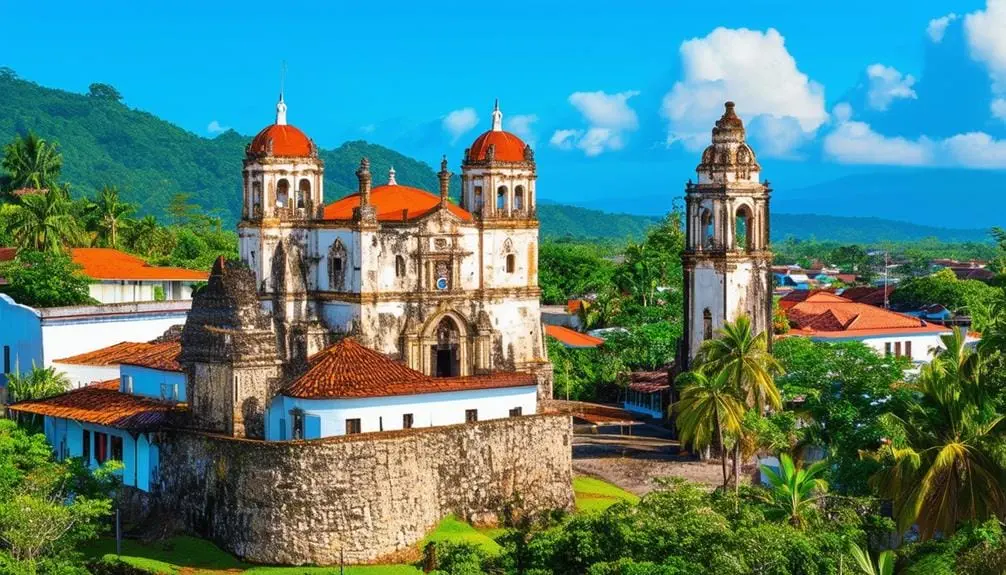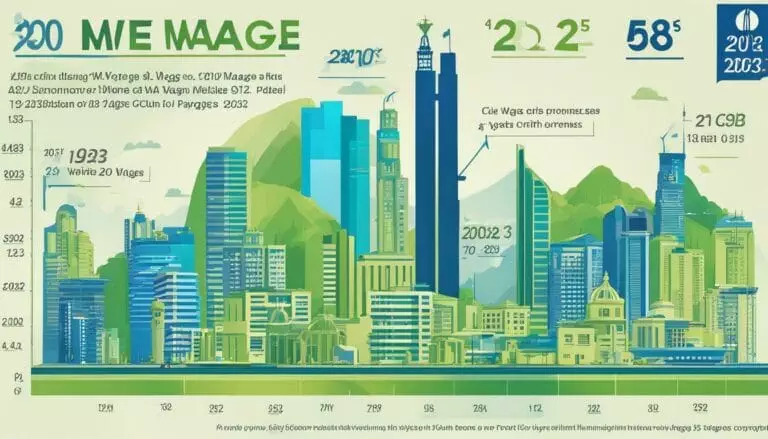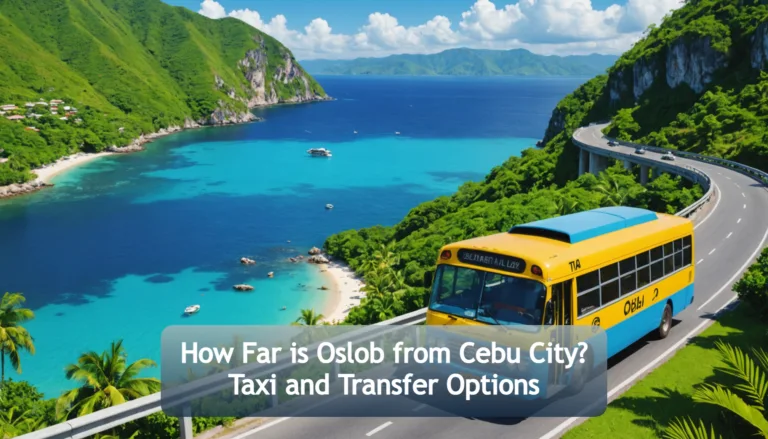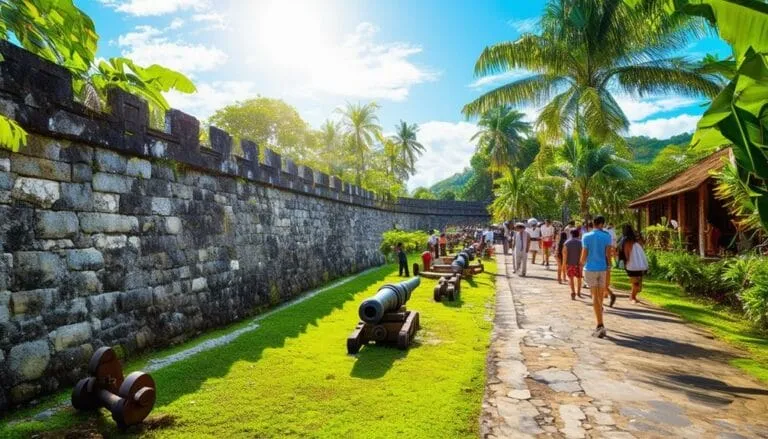Heritage Monuments of Cebu
When you visit Cebu, you'll find that its heritage monuments are more than just landmarks; they're windows into the island's vibrant past. The Heritage of Cebu Monument, Basilica del Sto. Niño, and Magellan's Cross aren't just visually stunning—they're pivotal in understanding the cultural and historical shifts that shaped the region. With sculptures crafted by national artist Eduardo Castrillo, these sites offer a blend of artistic and historical value. But how do these monuments reflect the island's journey through colonization and resistance? Stay with us to explore the deeper narratives each site holds.
Key Takeaways
- The Heritage of Cebu Monument in Parian Park depicts pivotal events in Philippine history.
- Basilica del Sto. Niño is a significant religious site, symbolizing Cebu's deep Christian heritage.
- Magellan's Cross commemorates the arrival of Christianity in the Philippines by Ferdinand Magellan.
- Yap-Sandiego Ancestral House showcases Spanish-era life and architecture in Cebu.
- Battle of Mactan and Lapu-Lapu's resistance are key historical elements reflected in Cebu's monuments.
Overview of Cebu Monuments
Celebrating its rich and multifaceted history, Cebu is home to several heritage monuments that capture the essence of its cultural evolution. The Heritage of Cebu Monument in Parian encapsulates key events, illustrating the shift from pre-colonial times to the Spanish period. This intricate sculpture serves as a visual narrative of Cebu's history, highlighting pivotal moments and figures. Additionally, Cebu is also dotted with other significant heritage sites that offer a glimpse into its past. The Fort San Pedro, Magellan’s Cross, and the Basilica Minore del Santo Nino are just a few examples of Cebu historical sites that showcase the city’s rich cultural heritage. These landmarks provide a window into the diverse and colorful history of Cebu, making it a fascinating destination for history enthusiasts and curious travelers alike.
Just a stone's throw away, the Basilica del Sto. Niño stands as a symbol of Cebu's deep-rooted religious heritage. Housing the revered Santo Niño de Cebu, this historic church draws both locals and tourists seeking to connect with its spiritual significance.
Nearby, Magellan's Cross marks the arrival of Christianity in the Philippines, symbolizing a significant cultural and religious shift. Nearby, Magellan’s Cross marks the arrival of Christianity in the Philippines, symbolizing a significant cultural and religious shift. This iconic relic, housed in a kiosk near the Basilica del Santo Niño in Cebu City, attracts countless visitors each year who seek to understand its enduring legacy. Its presence serves as a reminder of Magellan’s Cross historical importance in shaping the country’s spiritual identity and its integration into the broader narrative of world history.
In contrast, the Yap-Sandiego Ancestral House offers a glimpse into Spanish-era life. As one of the oldest residential structures in the country, it showcases traditional architecture and the rich cultural history of Cebu.
Not far from these sites, the Cebu Metropolitan Cathedral adds to the city's ecclesiastical heritage, embodying centuries of faith and devotion.
Historical Significance

The Heritage of Cebu Monument stands as a tribute to the island's profound historical significance, meticulously commemorating pivotal events that shaped Philippine history.
As you examine this monument, you'll notice how it captures the essence of Cebu's rich history through sculptures depicting key moments like the arrival of Ferdinand Magellan. His landing marks the beginning of Spanish colonization, an era that profoundly influenced the cultural heritage of the Philippines.
Your journey through the monument also highlights the Battle of Mactan, where local hero Lapu-Lapu fiercely defended his land against Magellan. This battle symbolizes the resistance against colonization and underscores the Cebuano spirit of freedom.
Moving forward, the monument commemorates the canonization of Blessed Pedro Calungsod, a young Filipino martyr, emphasizing the deep-rooted Christian faith that emerged from these historical interactions.
When you see the tribute to Sergio Osmeña, the monument's narrative extends into the 20th century, showcasing his role as the fourth President of the Philippines. This inclusion ties Cebu's local heritage to the broader scope of national history.
Built on the site of the Saint John the Baptist Church, the monument serves as a timeless reminder of Cebu's enduring cultural and historical legacy.
Artistic Elements
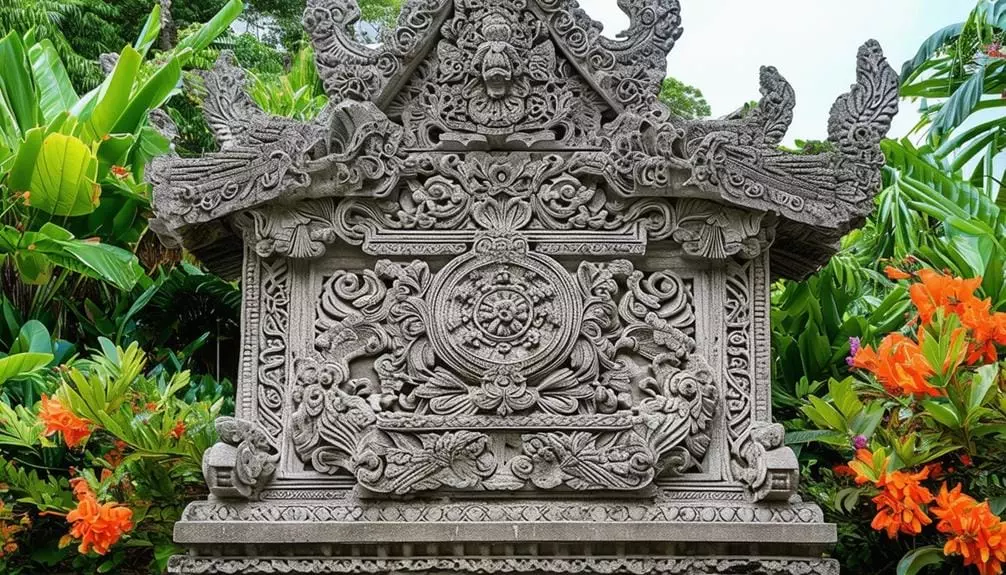
As you explore the Heritage of Cebu Monument, you'll find that its artistic elements aren't just visually striking but also deeply meaningful. The monument, designed by national artist Eduardo Castrillo, employs a tableau format, blending concrete, bronze, brass, and steel to depict pivotal events and historical figures from Cebu's history. This artistic presence is palpable, with intricate details that vividly bring to life key moments such as the Battle of Mactan and the baptism of Rajah Humabon.
Each sculpture within this Heritage Monument is a reflection of the rich cultural heritage of the Filipino people. By showcasing historical figures across different epochs, the monument narrates Cebu's evolution from pre-colonial to colonial eras. The artwork serves as both a visual spectacle and an educational resource, guiding you through significant events that shaped the region.
Positioned at the heart of Parian Park, the monument's artistic presence extends beyond mere aesthetics. It acts as a hub for community engagement, hosting cultural events that connect past and present.
Through Castrillo's masterful design, the Heritage Monument stands as a dynamic tableau of Cebu's vibrant history, inviting you to reflect on its enduring legacy.
Location and Accessibility

Nestled at Sikatuna Street in Cebu City, the Heritage of Cebu Monument is strategically positioned to offer easy access to visitors. This central location places you within walking distance of other prominent tourist attractions like Colon Street and the Yap-Sandiego Ancestral House, making it a convenient hub for your explorations.
Getting to the Cebu Monument is straightforward, thanks to the city's efficient public transport system. Jeepneys, a staple of Cebu City's transport, regularly ply routes that include the SM and Pier Area, guaranteeing you won't wait long for a ride.
Taxis and pedicabs are also readily available for those who prefer a more direct route.
Signage around the area is clear and plentiful, helping you navigate easily, whether you're a local or a tourist unfamiliar with the city. The regular operation of public transport guarantees that you can visit the monument at almost any time of day, enhancing its accessibility.
Visitor Experience and Amenities

Engage with Cebu's rich history by visiting the Heritage of Cebu Monument, where entry is free, encouraging everyone to explore this culturally significant site.
As you step into this historical landmark, you'll find a small park and fountain that create a relaxing area perfect for unwinding and soaking in the ambiance. The monument itself is beautifully illuminated at night, transforming the area into a picturesque scene that highlights Cebu's heritage.
However, you might notice that the site can get crowded, so it's best to visit during off-peak hours to fully appreciate the tranquility and historical depth.
While the monument's aesthetic appeal is undeniable, some visitors have mentioned a lack of informational signage. This can make it challenging to grasp the full historical context without additional help.
To enhance your understanding, consider hiring a guide who can provide detailed insights and stories about the monument's significance.
Frequently Asked Questions
What Are the Heritage Sites in Cebu?
You're asking about Cebu heritage sites. They showcase historical significance, architectural styles, and local legends. These tourist attractions, like Casa Gorordo, involve community efforts in cultural preservation, restoration, and educational programs to enrich visitor experiences.
What Is the Importance of the Heritage Monument in Cebu?
You'll find the heritage monument essential because it boosts cultural identity, showcases historical significance, and attracts tourism. It highlights diverse architectural styles, supports preservation efforts, enhances community engagement, offers educational value, and fosters local pride and economic benefits.
What Is the Famous Sculpture in Cebu?
You'll find the famous sculpture in Cebu, rich in history and cultural significance, designed by local artists using concrete, bronze, brass, and steel. It showcases artistic techniques, modern influences, and preservation efforts, making it a top tourist attraction.
What Is the Famous Landmark of Cebu?
You'll find that Cebu City's famous landmark, Magellan's Cross, holds immense historical significance. Its architectural style, cultural influences, and preservation efforts make it a prime tourist attraction, popular photography spot, and subject of educational programs and community involvement.
Conclusion
You've now explored the Heritage Monuments of Cebu, delving into their historical significance, artistic elements, and accessibility. These sites don't just commemorate the past; they bring Cebu's rich cultural tapestry to life. With intricate sculptures and stories of resilience and faith, you'll find a deeper connection to the island's legacy. Visiting these monuments isn't just about seeing history—it's about experiencing the spirit of Cebu and gaining a profound appreciation for its enduring heritage.

